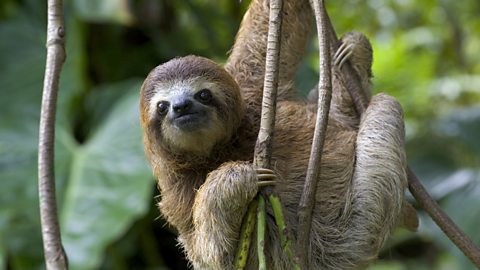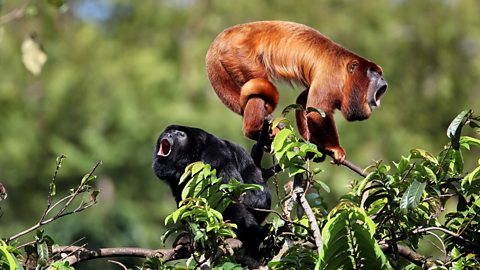Animal adaptation to the tropical rainforest climate
Only a small percentage of the animals live on the forest floor. Many live in the trees. It is thought that in the Amazon rainforest there are over 2,000 species of birds and 1,500 species of fish. There is also thought to be 50,000 kinds of insects in a single square mile.
Sloth

Sloths live high in the branches of the forests of Central and South America. Living up high keeps them away from predators such as jaguars.
They live on a diet of leaves, which is low in nutrients and calories. To survive on this poor diet, sloths have evolved a very slow metabolism to save energy.
Sloths have specialised tendons in their hands and feet that lock into place, allowing them to hang upside down for long periods of time without wasting any energy.
Sloths are so slow moving that green algae grow on their shaggy fur, which helps camouflage them in the trees.
Howler monkey

Howler monkeys have a great sense of smell. They have short snout with wide O shapes nostrils. Their noses are capable of smelling food such as fruits and nuts from over two kilometres away.
The tail of howler monkeys is in most cases roughly the same size as the body, meaning it can fully wrap around objects such as branches.
Male howler monkeys are the loudest animals in the rainforest. The howls can be heard for several miles in the rainforest, and allow the monkeys from one group to communicate with other groups. They communicate to defend their territories, telling other monkey groups not to come there because it is where they live.